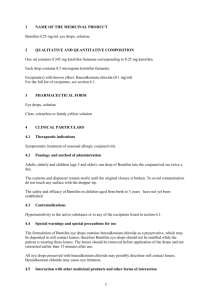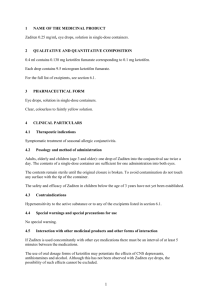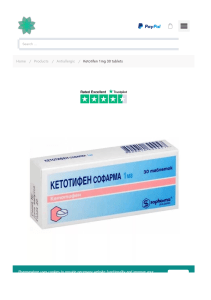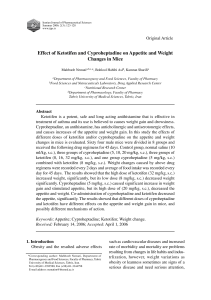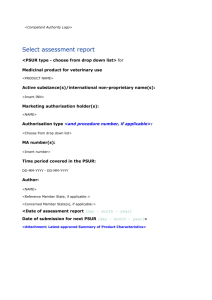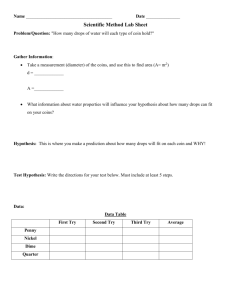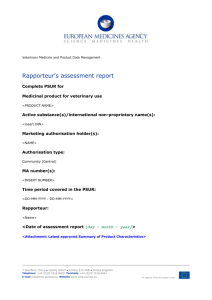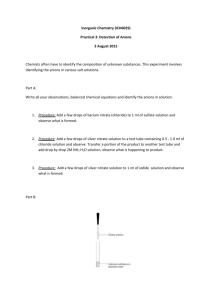Novartis Basic registration template
advertisement
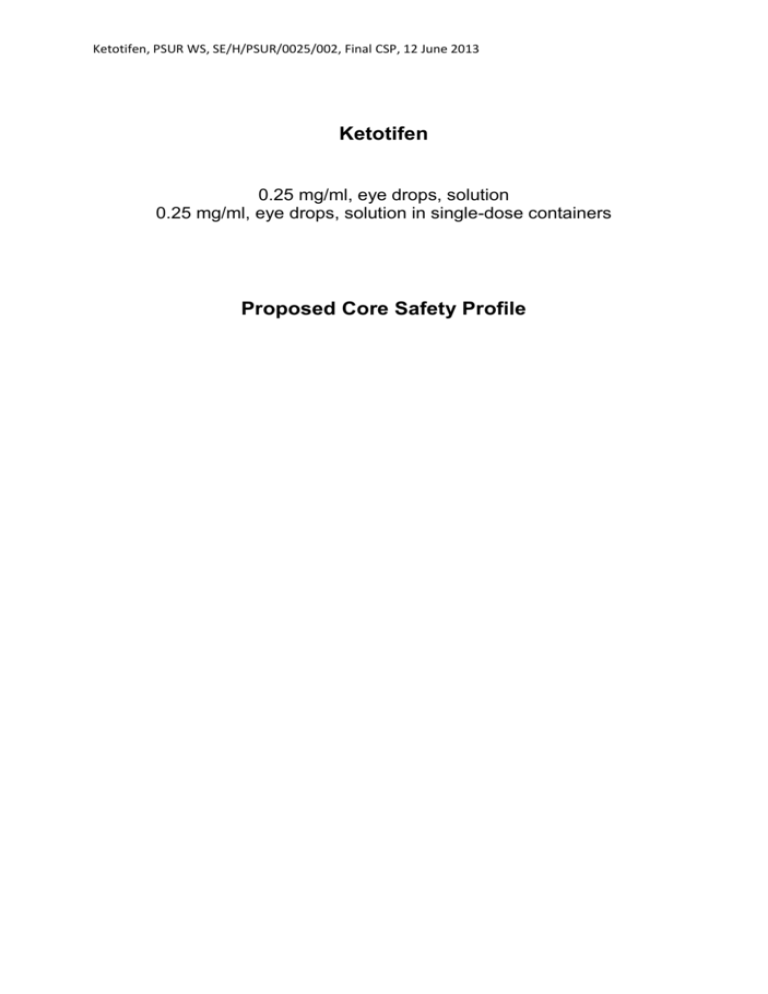
Ketotifen, PSUR WS, SE/H/PSUR/0025/002, Final CSP, 12 June 2013 Ketotifen 0.25 mg/ml, eye drops, solution 0.25 mg/ml, eye drops, solution in single-dose containers Proposed Core Safety Profile Ketotifen, PSUR WS, SE/H/PSUR/0025/002, Final CSP, 12 June 2013 4 CLINICAL PARTICULARS 4.3 Contraindications Hypersensitivity to ketotifen or to any of the excipients. 4.4 Special warnings and precautions for use MDU The formulation of ketotifen eye drops contains benzalkonium chloride as a preservative, which may be deposited in soft contact lenses; therefore ketotifen eye drops should not be instilled while the patient is wearing these lenses. The lenses should be removed before application of the drops and not reinserted earlier than 15 minutes after use. All eye drops preserved with benzalkonium chloride may possibly discolour soft contact lenses. Benzalkonium chloride may cause eye irritation. SDU No special warning. 4.5 Interaction with other medicinal products and other forms of interaction If ketotifen is used concomitantly with other eye medications there must be an interval of at least 5 minutes between the two medications. The use of oral dosage forms of ketotifen may potentiate the effect of CNS depressants, antihistamines and alcohol. Although this has not been observed with ketotifen eye drops, the possibility of such effects cannot be excluded. 4.6 Fertility, Pregnancy and lactation Pregnancy There are no adequate data from the use of ketotifen eye drops in pregnant women. Animal studies using maternally toxic oral doses showed increased pre- and postnatal mortality, but no teratogenicity. Systemic levels after ocular administration are much lower than after oral use. Caution should be exercised when prescribing to pregnant women. Breast-feeding Although animal data following oral administration show excretion into breast milk, topical administration to human is unlikely to produce detectable quantities in breast milk. Ketotifen eye drops can be used during lactation. Fertility There is no data available on the effect of ketotifen hydrogen fumarate on fertility in humans. 4.7 Effects on ability to drive and use machines Any patient who experiences blurred vision or somnolence should not drive or operate machines. Ketotifen, PSUR WS, SE/H/PSUR/0025/002, Final CSP, 12 June 2013 4.8 Undesirable effects Adverse drug reactions from clinical trials (table 1) are listed by MedDRA system organ class. Within each system organ class, the adverse drug reactions are ranked by frequency, with the most frequent reactions first. Within each frequency grouping, adverse drug reactions are presented in order of decreasing seriousness. In addition, the corresponding frequency category for each adverse drug reaction is based on the following convention (CIOMS III): Very common (≥ 1/10); common (≥ 1/100 to < 1/10); uncommon (≥ 1/1,000 to < 1/100); rare (≥ 1/10,000 to < 1/1,000); very rare (< 1/10,000), not known (cannot be estimated from the available data). Table 1 Adverse reactions Immune system disorders Uncommon: Hypersensitivity Nervous system disorders Uncommon: Headache Eye disorders Common: Eye irritation, eye pain, punctate keratitis, punctate corneal epithelial erosion Uncommon: Vision blurred (during instillation), dry eye, eyelid disorder, conjunctivitis, photophobia, conjunctival haemorrhage. Gastrointestinal disorders Uncommon: Dry mouth Skin and subcutaneous tissue disorders Uncommon: Rash, eczema, urticaria General disorders and administration site conditions Uncommon: Somnolence Adverse drug reactions from post marketing experience (Frequency not known) The following post marketing events have also been observed: hypersensitivity reactions including local allergic reaction (mostly contact dermatitis, eye swelling, eyelid pruritis and oedema), systemic allergic reactions including facial swelling/oedema (in some cases associated with contact dermatitis) and exacerbation of pre-existing allergic conditions such as asthma and eczema. 4.9 Overdose MDU No case of overdose has been reported. Ketotifen, PSUR WS, SE/H/PSUR/0025/002, Final CSP, 12 June 2013 Oral ingestion of the contents of a 5 ml bottle would be equivalent to 1.25 mg of ketotifen which is 60% of a recommended oral daily dose for a 3 year old child. Clinical results have shown no serious signs or symptoms after oral ingestion of up to 20 mg of ketotifen. SDU No case of overdose has been reported. Oral ingestion of the contents of a single-dose container would be equivalent to 0.1 mg of ketotifen which is 5% of a recommended oral daily dose for a 3 year old child. Clinical results have shown no serious signs or symptoms after oral ingestion of up to 20 mg of ketotifen.
